4th Annual Sword Tai Kai
- ericstalloch
- Nov 3, 2022
- 4 min read
On Saturday, October 22, 2022, the American Martial Arts Institute hosted the 4th annual Tai Kai for Takenouchi-Hangan-Ryu-Matsuno-Crandall Iaido/Batto.

The Samurai's way of life can be seen through the disciplined art of the sword. The instructors an students of the Takenouchi-Hangan-Ryu-Matsuno-Crandall Iaido/Batto-do school practice this Do (Way).
Each year through the Tai Kai, guest have the opportunity to view the discipline of the Samurai through the katas and cutting competition of the students of this school. This is a life changing discipline that can enhance everything a person does. As the Headmaster of the school, I welcome you to this year's event.
-Headmaster Clifford C. Crandall, Jr.
Iaido is an ancient martial art that teaches the use of the Japanese sword (katana and wakizashi), and while in modern times it is a seemingly impractical Art, it becomes practical in daily life because it moves the practitioner beyond the physical movements of the sword into a state of calmness within action. Its philosophy and tradition help the individual to cultivate a personal strength that can make a difference the student's personal commitments, whether to themselves, family, friends, their profession or community involvement. Takenouchi-Hangan-Ryu-Matsuno-Crandall Iaido has an unbroken lineage dating back over 300 years and is now in its seventh generation. The history of school can be found in its textbook (available through amazon.com), and on this website.

In addition to iaido, this school also teaches batto-do. While an oversimplification, batto utilizes a live (sharp) sword to cut reed posts in a demonstration of skill and power.
This year's tai kai (competition) involved divisions for demonstrating kata from this iaido style, individual cutting, kumi tachi, muto dori, and do dan cutting.
Kata
Kata are one of the most traditional and visually obvious parts of iaido. They are a series of moves that fight off imaginary attackers. In the case of the sword, it can involve a single draw, cut, and re-sheathing of the sword, or it can involve multiple blocks or cuts. Following 300 years of tradition, there are separate katas for males and females. Advanced students of the art who have achieved the position of Renshi or Kyoshi learn both male and female forms regardless of their gender. Some of the kata demonstrated included ten-no-kata, Wu-ken/Sa-ken, Ninin-giri, kuruma-otoshi, Riken, gyaku-batu-riken, and many others.
Muto Dori
Muto Dori is often thought of as defending yourself against a sword when you do not have one in your own hands, but this aspect of traditional iaido starts with having the courage to face an opponent whether or not you have a sword even if you have a sword. There are four fundamental Muto Dori in Takenouchi-Hangan-Ryu-Matsuno-Crandall Iaido (though numerous others exist). For this division, two adult black belts from the American Martial Arts Institute's empty hand style (American Eagle Style) assisted as partners for each competitor. Thank you to Vincent Siegfried and Ryan Payne.
Kumi Tachi
Kumi tachi are sword practice drills with a partner, and for the competition were done using wooden swords (bokken) for added safety. This style has several kumi tachi including kubi, tekubi, dotai, atama, and ashi atama, but others exist. They are documented on a DVD produced by Headmaster Crandall with help from Kyoshi Morris.
Cutting
Batto involves cutting what is often referred to as a reed post. These are a type of grass (reed) that are woven into mats. These mats are then rolled into cylinders (posts), tied, and soaked in water to increase their density. They are then cut using the sword. Depending the division the competitor may need to cut the reed between 2 and 6 times. The participants are scored on the angle of the cut, the order of the cuts, how far from the post the cut portion falls, whether or not their cuts touch one another (they shouldn't) and other skill factors.
Do-Dan
Do-dan is a batto division where the reeds lay stacked on top of one another horizontally and are cut downward in a display of power. This year five reeds were stacked for each competitor.
TAI KAI COORDINATOR
The picture below is Headmaster Clifford C. Crandall Jr. with his top Iaido student and certified instructor, Kyoshi Nathan Morris. Kyoshi Morris is to be congratulated for his outstanding work in organizing and structuring of this year’s Tai Kai.

As the coordinator for the Tai Kai, his responsibilities involved everything from the condition of the cutting stands; obtaining, rolling and preparing reeds for cutting; registration; preparation of competition materials; weapons check; and judging.
Because of Kyoshi Morris’s attention to detail and professionalism, this year’s Tai Kai was a great success and has laid the foundation for an even larger and more expansive Tai Kai in August of 2023.
Division Winners
Beginner's Kata (K-1): Connor Massey

Intermediate Kata (K-2): Bret Jessee

Advanced Kata (K-3): Sabrina Crandall

Intermediate Kumi Tachi (KT-1): Joe DeTraglia

Advanced Kumi Tachi (KT-2): Gisella Stalloch

Muto Dori (MD-1): Amanda Crandall

Intermediate Cutting (C-1): Bret Jessee

Advanced Cutting (C-2): Sabrina Crandall

Do-Dan (D-2): Eric Stalloch







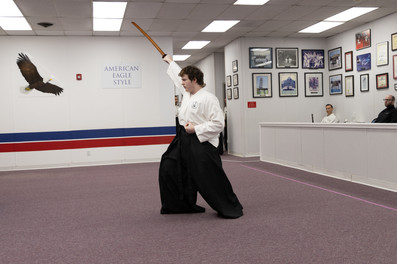



















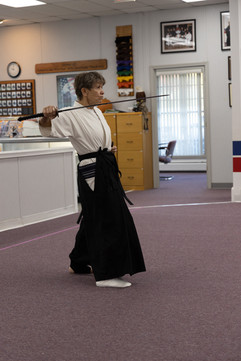







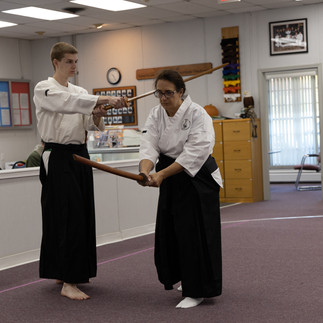









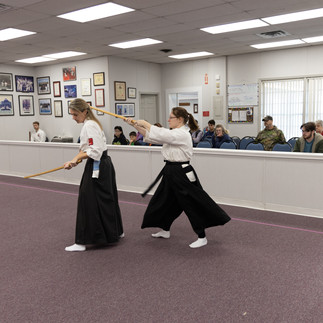

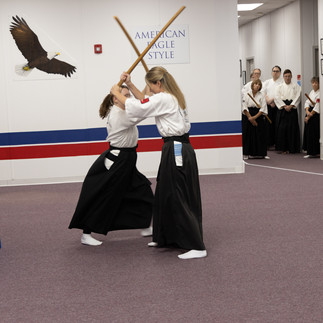











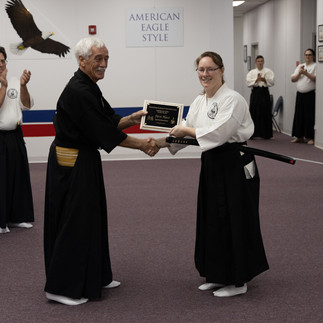

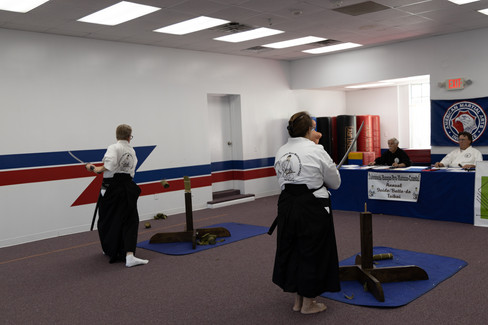











































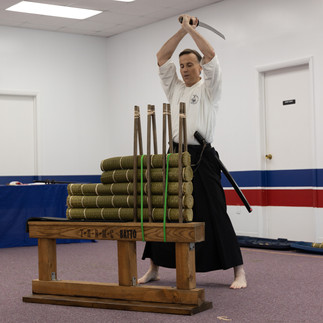



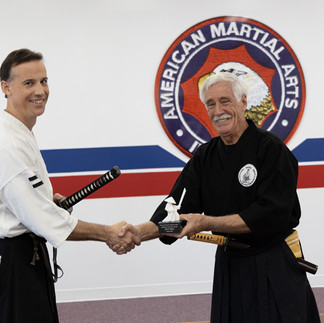












Comments